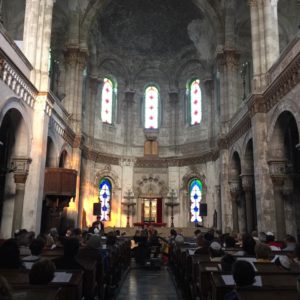FEATURES Vercelli, the Path of Freedom
“Siamo liberi!”
Throughout history, Jews have spoken those words at various times: “We are free!” Undoubtedly, it has not been easy for the small minority, which often becomes the scapegoat for others.
The year 1848 brought a ray of hope to the Jewish minority of the Kingdom of Sardinia, which corresponds to the northwestern portion of present-day Italy, plus the large Mediterranean island of Sardinia. It was in this year that King Charles Albert I granted full rights and citizenship to the Jews of his kingdom. At this point in time, the Piedmontese town of Vercelli had around 600 Jews (out of a population of roughly 25,000) who were part of a modest but economically stable community.
The Foa family, had already been living in Vercelli for many years by that time. They had faced the establishment of the ghetto in 1724, making it of the last ghettos to be formed in Italy, the first one having been formed at Venice in 1516.
Today, most people unfamiliar with Jewish history would likely associate ghettos and identification badges for Jews only with the Holocaust. The Foa family of Vercelli might quickly correct them and show them the location of their home within the old ghetto and the Jewish badges they were forced to wear.
When Elijah E. Foa died in 1796, he willed his sizable fortune to the Jewish community. His fortune was put towards charitable societies and institutions. By this point in time, the children who had been put into the ghetto in 1724 were now grandparents and their grandchildren would now reap the benefits of the Hebrew College, Foa’s College, which was established in Foa’s old house. Jews may have been forced into the Vercelli ghetto, but they remained steadfast in their religion and their culture through the synagogue and the creation of this college. Many of the grandchildren were able to become rabbis and professors through this institution.
The rabbis and professors who went through this schooling were eventually able to spread their knowledge when the ghetto was fully emancipated in 1848 and they were given equal citizenship, and the right to live wherever they chose. Siamo liberi!
Tracing ancestry gets tricky around this time, because the Jews started to move freely about Italy due to their newfound freedom. By 1935, the Jewish population in Vercelli totaled around 275. This is significantly lower than before, because many Jews chose to move to the larger nearby cities of Turin and Milan in search of work.
Currently, the Vercelli synagogue, the first synagogue to be built in Italy after the 1848 emancipation, is being restored. This synagogue was beautifully designed in an eclectic Moorish style as a celebration of the Jewish community’s newfound freedom. It is open to visitors at the address: via Foa, 56/58.
*Emily O’Mahoney is a student at Muhlenberg College (Allentown, Pennsylvania, USA).

